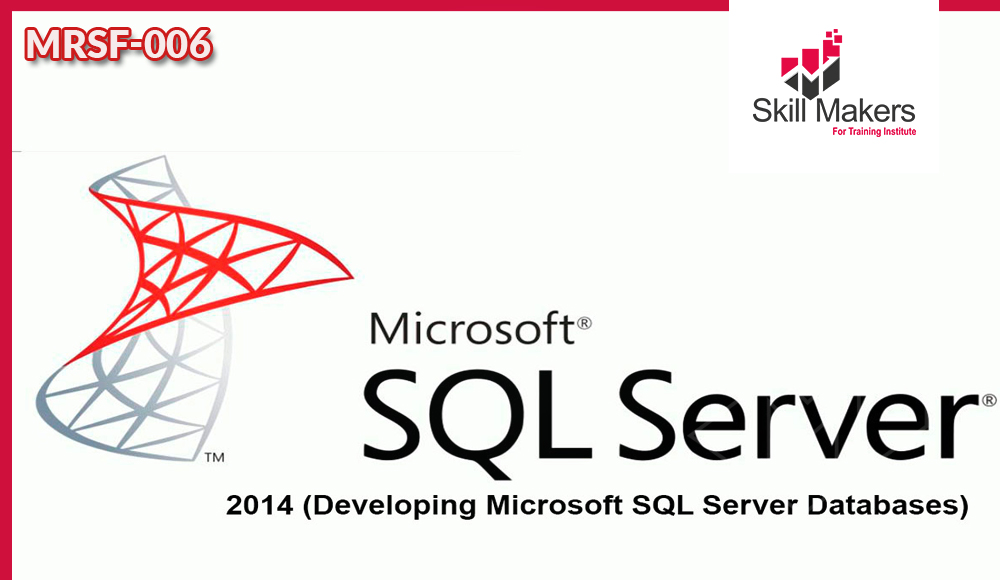-
Course Code
MRSF-006

Developing Microsoft SQL Server 2014 Databases - M20464
- This 5-day instructor-led course introduces SQL Server 2014 and describes logical table design, indexing and query plans. It also focusses on the creation of database objects including views, stored procedures, along with parameters, and functions. Other common aspects of procedure coding, such as indexes, concurrency, error handling, and triggers are also covered in this course. Also, this course helps you prepare for the Exam 70-464.
- This course is designed for customers who are interested in learning SQL Server 2012 or SQL Server 2014. It covers the new features in SQL Server 2014, but also the important capabilities across the SQL Server data platform.
Learning Outcomes
- Introduce the entire SQL Server platform and its major tools. It will cover editions, versions, basics of network listeners, and concepts of services and service accounts
- Determine appropriate data types to be used when designing tables, convert data between data types, and create alias data types
- Be aware of good design practices regarding SQL Server tables and be able to create tables using T-SQL. (Note: partitioned tables are not covered)
- Implement PRIMARY KEY, FOREIGN KEY, DEFAULT, CHECK and UNIQUE constraints, and investigate cascading FOREIGN KEY constraints
- Determine appropriate single column and composite indexes strategies
- Create tables as heaps and tables with clustered indexes. Also consider the design of a table and suggest an appropriate structure
- Read and interpret details of common elements from execution plans
- Design effective non-clustered indexes
- Design and implement views
- Design and implement stored procedures
- Work with table types, table valued parameters and use the MERGE statement to create stored procedures that update data warehouses
- Design and implement functions, both scalar and table valued
- Perform basic investigation of a deadlock situation and learn how transaction isolation levels affect application concurrency
- Use both traditional T-SQL error handling code and structured exception handling.
- Design and implement DML triggers
- Learn appropriate uses for SQL CLR integration and implement an existing .NET assembly within SQL Server
Course Contents
- Module 1: Introduction to Database Development
- Module 2: Designing and Implementing Tables
- Module 3: Ensuring Data Integrity through Constraints
- Module 4: Introduction to Indexing
- Module 5: Advanced Indexing
- Module 6: Column store Indexes
- Module 7: Designing and Implementing Views
- Module 8: Designing and Implementing Stored Procedures
- Module 9: Designing and Implementing User-Defined Functions
- Module 10: Responding to Data Manipulation via Triggers
- Module 11: Using In-Memory Tables
- Module 12: Implementing Managed Code in SQL Server
- Module 13: Storing and Querying XML Data in SQL Server
Our Methodology
- Make coaching and monitoring innovative and using modern
- Media training also using on the go training by using interactive means and focusing on
- The exercises, practical applications and real situations study
- Live delivery method, instructor-led training
- Experienced consultant, trainers, and professional
- Qualified trainer with high-level experience
Attendance Reports
- Send daily attendance reports to training departments
- Send full attendance report to training dep. by the end of the course
- Attend 100 % from the course days also provide daily
- Issue attendance certificate for participant who attend minimum 80% from the course duration
Pre/Post Reports
- Pre- assessment before starting training
- Post assessment after finish training
- Full report for the deferent between Pre-& Post assessment
Who Should Attend
- IT Professionals who want to become skilled on SQL Server 2014 product features and technologies for implementing a database
- Developers from other product platforms or previous versions of SQL Server who want to become skilled in implementing a SQL Server 2014 database
